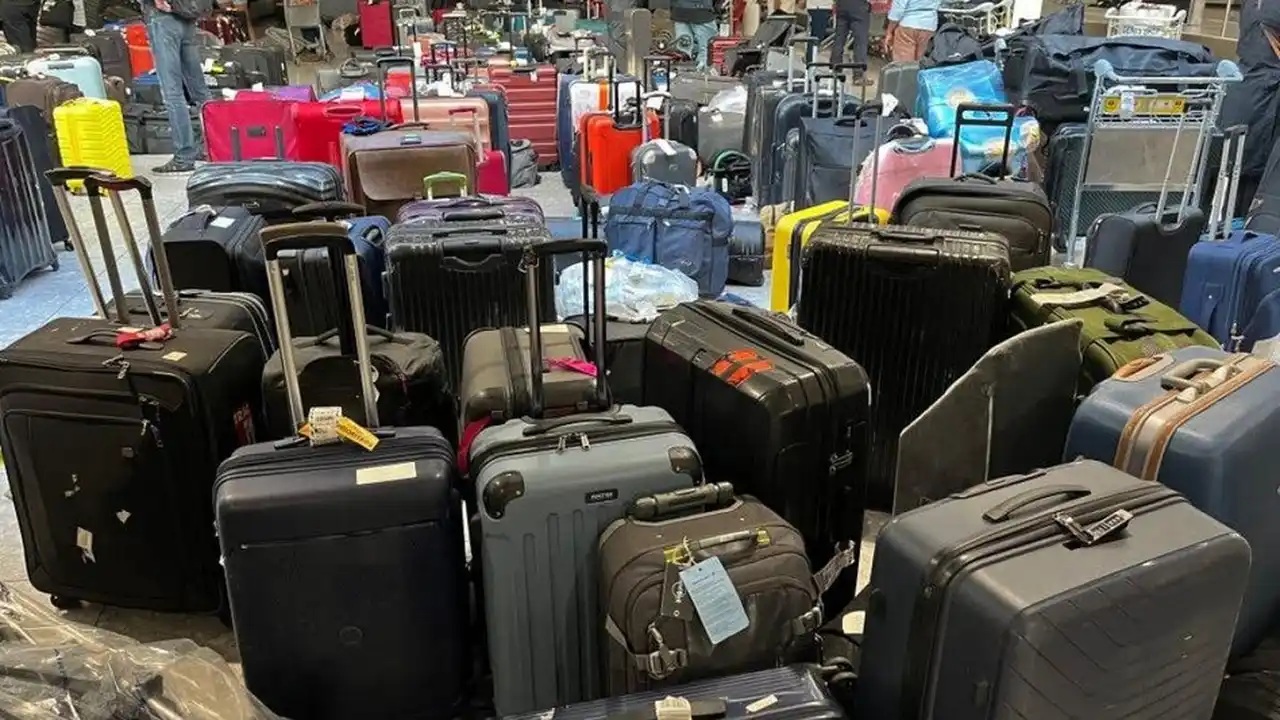The Importance of Reading the Fine Print: Senior Travel Insurance

Learn how to file a travel insurance claim successfully. Gather required documentation, follow policy guidelines, and track your claim status. Get reimbursed for your losses.
Understanding Your Travel Insurance Policy Before Filing a Claim
Okay, so you're back from your trip, or maybe you're still on it and something went wrong. Either way, you need to file a travel insurance claim. Before you dive in, let's make sure you understand your policy. This is super important because knowing what's covered (and what's not) will save you a lot of time and frustration. Grab your policy documents and let's break it down.
First things first, find the "Coverage Details" section. This usually lists everything your policy covers, such as trip cancellation, trip interruption, medical expenses, lost luggage, and more. Pay close attention to the "Policy Limits" – the maximum amount the insurance company will pay for each type of claim. For example, your policy might cover up to $10,000 for medical expenses or $500 for lost luggage. Knowing these limits will help you understand what to expect.
Next, check the "Deductible." This is the amount you have to pay out of pocket before the insurance company starts covering your expenses. For instance, if your deductible is $100 and you have a $500 medical bill, you'll pay $100, and the insurance company will pay the remaining $400.
Also, be sure to read the "Exclusions" section carefully. This lists situations and events that your policy doesn't cover. Common exclusions include pre-existing medical conditions (unless you purchased a waiver), participation in extreme sports, and acts of war. If your claim falls under one of these exclusions, it's unlikely to be approved.
Finally, note the "Claim Filing Deadline." Most policies have a deadline for filing a claim, typically within 30 to 90 days of the incident. Make sure you file your claim before this deadline to avoid rejection. Understanding these key elements of your policy will set you up for a smoother claim filing process. Now, let's move on to gathering the necessary documentation.
Gathering the Required Documentation for a Successful Travel Insurance Claim
Alright, now that you know your policy inside and out, it's time to gather all the necessary documents. This is a crucial step because the more organized and thorough you are, the better your chances of getting your claim approved quickly. Here's a checklist of documents you'll likely need:
- Your Travel Insurance Policy: This is the most important document. Make sure you have a copy of your policy number and all the relevant details.
- Proof of Travel: This includes your airline tickets, cruise tickets, hotel reservations, and any other documents that prove you were traveling.
- Medical Records: If your claim involves medical expenses, you'll need to provide detailed medical records from the doctor or hospital you visited. These records should include the diagnosis, treatment, and itemized bills.
- Police Report: If your claim involves theft or loss of belongings, you'll need to file a police report and provide a copy of it with your claim.
- Receipts and Invoices: Keep all receipts and invoices related to your claim, such as receipts for medication, accommodation, transportation, and any other expenses you incurred.
- Trip Cancellation or Interruption Documentation: If you're claiming for trip cancellation or interruption, you'll need to provide documentation that explains why you had to cancel or interrupt your trip. This could include a doctor's note, a death certificate, or a letter from your employer.
- Proof of Value: For lost or damaged items, you'll need to provide proof of their value. This could include receipts, appraisals, or credit card statements.
- Any Other Supporting Documents: Depending on the nature of your claim, you may need to provide additional documents, such as letters from airlines or hotels, or statements from witnesses.
Make copies of all your documents before submitting them. Keep the originals in a safe place. Organize your documents in a clear and logical manner. This will make it easier for the insurance company to review your claim. A well-documented claim is more likely to be approved quickly and without hassle. Now, let's move on to filling out the claim form.
Filling Out the Travel Insurance Claim Form Accurately
Okay, you've got all your documents ready. Now, it's time to tackle the claim form. This might seem daunting, but take it one step at a time. Accuracy is key here, so double-check everything before you submit it. Claim forms can usually be found on the insurance provider’s website, or they can be mailed to you directly. Here’s how to approach it:
- Read the Instructions Carefully: Start by reading the instructions on the claim form. Make sure you understand what information you need to provide and how to fill out each section.
- Provide Accurate Information: Fill out all the required fields with accurate and up-to-date information. Double-check your policy number, contact details, and travel dates.
- Describe the Incident Clearly: In the section where you describe the incident, be as clear and detailed as possible. Explain what happened, when it happened, and how it affected your trip. Use simple, straightforward language and avoid using jargon.
- Include All Relevant Details: Make sure you include all relevant details related to your claim. For example, if you're claiming for medical expenses, provide the name and address of the doctor or hospital you visited, the date of treatment, and a description of the medical services you received.
- Attach Supporting Documents: Attach all the supporting documents you gathered in the previous step. Make sure each document is clearly labeled and organized.
- Review Your Claim Form: Before submitting your claim form, review it carefully to make sure you haven't missed anything. Check for any errors or omissions and correct them.
- Sign and Date Your Claim Form: Don't forget to sign and date your claim form. Most insurance companies won't process a claim form that isn't signed.
- Keep a Copy of Your Claim Form: Make a copy of your claim form and all supporting documents for your records. This will be helpful if you need to follow up on your claim or provide additional information.
By filling out your claim form accurately and completely, you'll increase your chances of getting your claim approved quickly. Now, let's talk about submitting your claim.
Submitting Your Travel Insurance Claim and Following Up
Alright, you've filled out the claim form and gathered all the necessary documents. Now, it's time to submit your claim. Here's how to do it:
- Choose the Right Submission Method: Most insurance companies offer multiple ways to submit your claim, such as online, by mail, or by email. Choose the method that's most convenient for you. If you're submitting your claim online, make sure you have a stable internet connection and that you follow the instructions carefully. If you're submitting your claim by mail, use certified mail so you can track its delivery.
- Include All Required Documents: Make sure you include all the required documents with your claim form. Double-check your checklist to ensure you haven't missed anything.
- Keep a Record of Your Submission: Keep a record of when and how you submitted your claim. If you submitted your claim online, take a screenshot of the confirmation page. If you submitted your claim by mail, keep the tracking number.
- Follow Up on Your Claim: After submitting your claim, follow up with the insurance company to check on its status. Most insurance companies will provide you with a claim number and a contact person. Use this information to inquire about the progress of your claim.
- Be Patient: Processing a travel insurance claim can take time, so be patient. Insurance companies typically need several weeks to review a claim and gather all the necessary information.
- Respond Promptly to Requests: If the insurance company requests additional information or documentation, respond promptly. The sooner you provide the requested information, the sooner your claim can be processed.
- Keep Detailed Records: Keep detailed records of all communication with the insurance company, including emails, phone calls, and letters. Note the date, time, and content of each communication.
By following these steps, you can ensure that your claim is submitted properly and that you stay informed about its status. Now, let's talk about what to do if your claim is denied.
What to Do If Your Travel Insurance Claim Is Denied
Okay, so you filed your claim, waited patiently, and then… denial. It's frustrating, but don't give up just yet! Claim denials happen, and often, they can be overturned. Here's what you need to do:
- Understand the Reason for Denial: The first thing you need to do is understand why your claim was denied. Read the denial letter carefully and look for the specific reason cited by the insurance company. Common reasons for denial include pre-existing conditions, policy exclusions, lack of documentation, and failure to meet the claim filing deadline.
- Review Your Policy: Review your travel insurance policy again to see if the reason for denial is valid. Pay close attention to the coverage details, exclusions, and claim filing requirements.
- Gather Additional Documentation: If you believe the denial was unjustified, gather additional documentation to support your claim. This could include medical records, police reports, receipts, or letters from airlines or hotels.
- File an Appeal: Most insurance companies have an appeals process that allows you to challenge a denial. Follow the instructions in the denial letter to file an appeal. In your appeal, explain why you believe the denial was incorrect and provide any additional documentation to support your claim.
- Contact Your Insurance Agent or Broker: If you purchased your travel insurance through an agent or broker, contact them for assistance. They may be able to help you understand the reason for denial and file an appeal.
- Seek Legal Advice: If your claim is for a significant amount of money and you believe the denial was unjustified, consider seeking legal advice from an attorney who specializes in insurance claims.
- Contact the Department of Insurance: You can also file a complaint with your state's Department of Insurance. This agency can investigate your claim and help you resolve the dispute with the insurance company.
Don't be afraid to fight for your rights. If you believe your claim was unfairly denied, take the necessary steps to appeal the decision. With persistence and the right documentation, you may be able to get your claim approved.
Travel Insurance Claim Success: Examples and Tips from Fellow Seniors
Let's look at some real-life scenarios where seniors successfully navigated the travel insurance claim process. Hearing these stories can give you some extra confidence and practical tips.
Scenario 1: Medical Emergency Abroad. Mary, a 70-year-old from Florida, fell and broke her hip while on a Mediterranean cruise. She had purchased a comprehensive travel insurance policy that included medical coverage and emergency evacuation. The insurance company arranged for her to be airlifted to a hospital in Italy, where she received treatment. The insurance company paid for her medical expenses, which totaled over $50,000, as well as her transportation back home. Mary's Tip: "Make sure you have adequate medical coverage, especially if you have pre-existing conditions. It's worth the extra cost."
Scenario 2: Lost Luggage. John, a 65-year-old from California, lost his luggage while traveling to Europe. He had packed all his essential medications and clothing in his checked bag. Fortunately, he had travel insurance that included coverage for lost luggage. The insurance company reimbursed him for the cost of replacing his medications and clothing, as well as the value of his lost belongings. John's Tip: "Keep a list of everything you pack in your luggage, and take photos of your belongings. This will make it easier to file a claim if your luggage is lost or stolen."
Scenario 3: Trip Cancellation Due to Illness. Susan, a 72-year-old from Texas, had to cancel her trip to Alaska due to a sudden illness. She had purchased trip cancellation insurance, which reimbursed her for her non-refundable expenses, including her airline tickets, hotel reservations, and tour bookings. Susan's Tip: "Buy trip cancellation insurance as soon as you book your trip. This will protect you in case you have to cancel due to unforeseen circumstances."
General Tips for Success:
- Read reviews: Before choosing a travel insurance provider, read reviews from other seniors to see what their experiences have been like.
- Compare quotes: Get quotes from multiple insurance companies to find the best coverage at the best price.
- Don't be afraid to ask questions: If you're unsure about anything, don't hesitate to contact the insurance company and ask for clarification.
Recommended Travel Insurance Products for Seniors
Choosing the right travel insurance can be overwhelming. Here are a few reputable companies and specific plans often recommended for senior travelers, along with their pros, cons, and estimated costs. Note that prices can vary based on your age, destination, trip length, and coverage needs.
1. Allianz Travel Insurance
Pros: Wide range of plans, excellent customer service, strong medical coverage options.
Cons: Can be pricier than some competitors.
Plans to Consider: Allianz Global Assistance’s AllTrips Premier plan (annual plan), OneTrip Prime.
Typical Scenario: Ideal for seniors who travel frequently and want comprehensive coverage, including pre-existing condition waivers (if eligible).
Estimated Cost: Varies widely; expect to pay $200-$500+ for an annual plan or $80-$200+ for a single-trip plan depending on coverage and trip details.
2. World Nomads Travel Insurance
Pros: Good for adventurous seniors, covers a wide range of activities, flexible policy options.
Cons: May not be the best choice for those with significant pre-existing conditions or those seeking the lowest prices.
Plans to Consider: Explorer Plan (for adventurous activities), Standard Plan.
Typical Scenario: Suitable for active seniors who enjoy hiking, skiing, or other outdoor activities and want coverage for those specific risks.
Estimated Cost: Typically ranges from $70-$250+ for a single-trip plan, depending on trip length and activities.
3. Travel Guard
Pros: Comprehensive coverage options, 24/7 travel assistance, good reputation.
Cons: Can be more expensive than some budget options.
Plans to Consider: Travel Guard Platinum, Travel Guard Gold.
Typical Scenario: A solid choice for seniors who want a well-rounded policy with reliable customer support and a wide range of coverage benefits.
Estimated Cost: Single-trip plans often range from $90-$300+ depending on coverage.
4. InsureMyTrip
Pros: Comparison website, allows you to easily compare quotes from multiple providers, helpful customer service.
Cons: Not an insurance provider itself; you'll still need to evaluate the underlying policies.
Typical Scenario: Best for seniors who want to quickly compare multiple travel insurance options and find the best deal for their specific needs.
How it Works: Enter your trip details and receive quotes from various providers. Compare policies side-by-side to find the best fit.
5. Travelex Insurance Services
Pros: Offers customizable plans, good for cruises, options for pre-existing condition coverage.
Cons: Customer service reviews can be mixed.
Plans to Consider: Travelex Travel Select, Travelex Travel Basic.
Typical Scenario: A good option for seniors going on cruises or those who need specific coverage for pre-existing conditions.
Estimated Cost: Single-trip plans typically range from $60-$200+, depending on coverage and trip details.
Comparing Travel Insurance Products Side-by-Side
Let's compare a few key features across these providers. This is a simplified comparison, and it's essential to get personalized quotes for your specific trip.
| Feature | Allianz | World Nomads | Travel Guard | Travelex |
|---|---|---|---|---|
| Pre-Existing Condition Coverage | Available with waiver (if eligible) | Limited | Available | Available |
| Emergency Medical | High Limits | Good Limits | High Limits | Good Limits |
| Trip Cancellation | Comprehensive | Standard | Comprehensive | Standard |
| Adventure Activities | Limited | Excellent | Limited | Limited |
| 24/7 Assistance | Yes | Yes | Yes | Yes |
Important Note: Always get a personalized quote from each provider based on your age, destination, trip length, and specific coverage needs. This table is for general comparison purposes only.
Understanding Travel Insurance Costs and Value
Travel insurance costs can vary significantly based on several factors. Here's a breakdown of what influences the price and how to assess the value you're getting:
- Age: Older travelers generally pay more due to increased risk of medical issues.
- Destination: Traveling to countries with high medical costs (e.g., the United States) will increase premiums.
- Trip Length: Longer trips cost more to insure.
- Coverage Level: Higher medical limits, trip cancellation coverage, and other add-ons increase the price.
- Deductible: Choosing a higher deductible can lower your premium.
- Pre-Existing Conditions: Coverage for pre-existing conditions can significantly increase costs.
Assessing Value: Don't just focus on the price. Consider the following:
- Coverage Limits: Ensure the medical coverage limits are adequate for your destination.
- Exclusions: Understand what's not covered.
- Customer Service: Read reviews to assess the quality of customer service and claims handling.
- 24/7 Assistance: A reliable 24/7 assistance service can be invaluable in an emergency.
By carefully evaluating these factors, you can find a travel insurance policy that provides the right coverage at a reasonable price. Remember, the peace of mind knowing you're protected is often worth the investment.
:max_bytes(150000):strip_icc()/277019-baked-pork-chops-with-cream-of-mushroom-soup-DDMFS-beauty-4x3-BG-7505-5762b731cf30447d9cbbbbbf387beafa.jpg)






